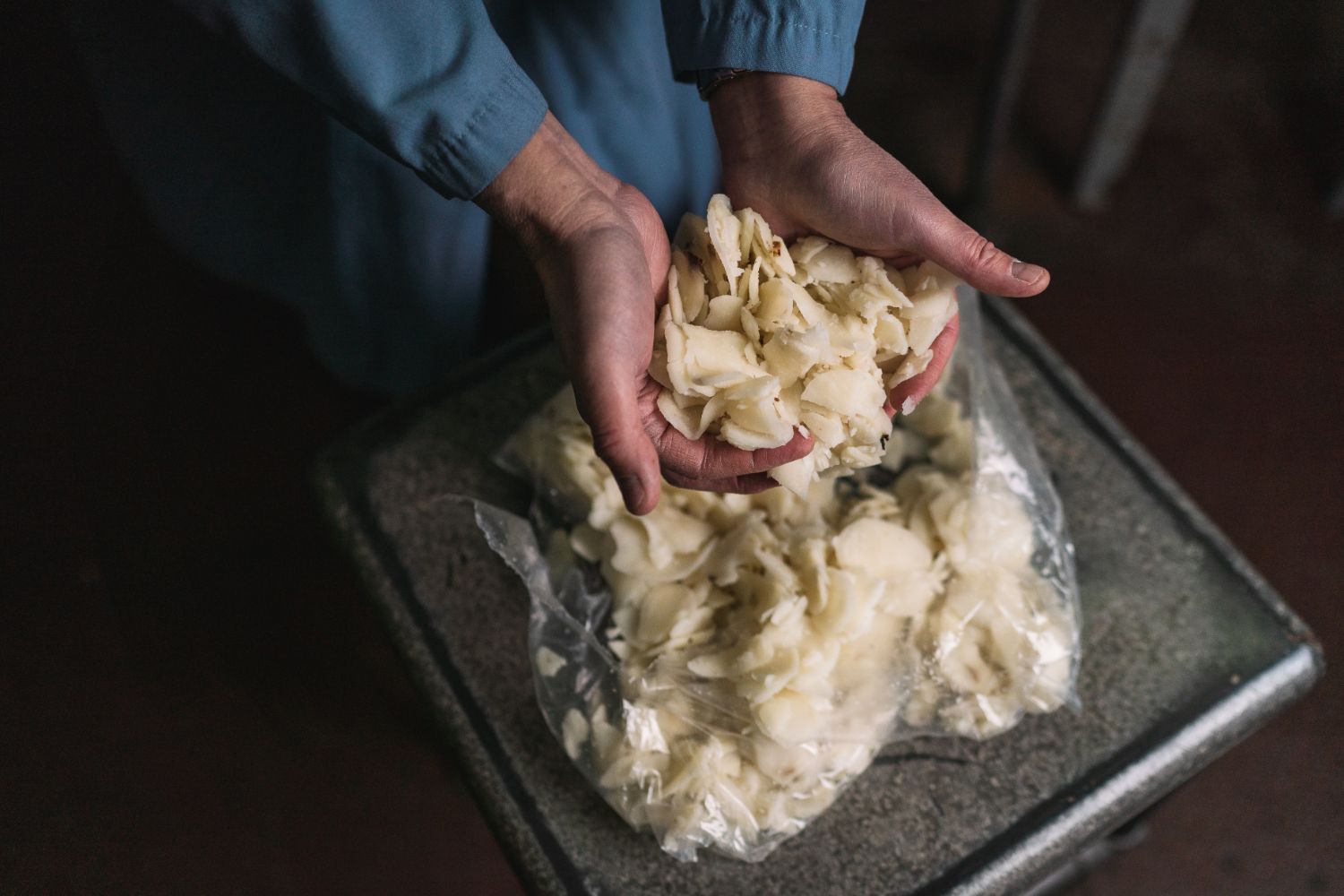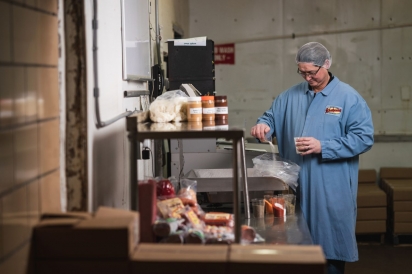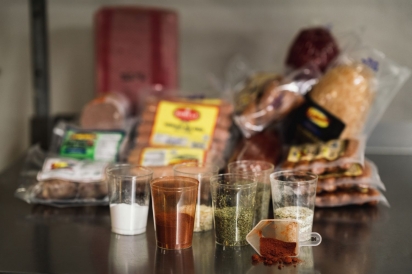Botaniline: Developed through Food Science
Soon, thanks to a local startup, you may be stocking your fridge with healthier sausages and hot dogs.
Botaniline calls itself “a food technology company on a mission to make the world a healthier place.” Using an additive called OBB (O’Brien’s Best) that was developed by food scientist and co-founder Dean O’Brien, Botaniline has been putting healthier hot dogs into Buffalo Public Schools since 2018, and the company recently announced the development of a peanut butter alternative that’s made without peanuts.
O’Brien developed OBB while working as a food scientist at Wardynski’s Meats, a Buffalo-based sausage company. Today, Wardynski’s uses OBB in some of its products sold at Wegmans, Tops and local grocers, and the company is also a co-packer of hot dogs made with OBB that are supplied to schools.
For O’Brien, the inspiration behind OBB happened in 2012 in Canada during a lunch of bangers and mash when a colleague challenged him to make a fast-food version of that traditional English meal. O’Brien naturally thought of inserting mashed potato into banger sausages. During his experiments combining potatoes and meat, O’Brien noticed that the starch in his potatoes was acting as a binder—a role typically performed by salt and other additives. O’Brien realized that an additive based on potato starch could replace a lot of the salt and additives used to bind commercial sausages, making sausages with the new additive much healthier.
O’Brien’s discovery is a potential game changer, especially when you consider the popularity of hot dogs. You might not be concerned about the nutritional value of your hot dog at the ballpark, but franks are commonly served in settings with strict dietary controls, including in schools, healthcare facilities, prisons and various government facilities.
Although O’Brien was inspired to create something specific, many food production companies generate ideas through team brainstorming. The best ideas become the focus of further development. First, a proof of concept must be established. Then, it’s time to develop prototypes.
Prototyping helps food scientists figure out what ingredients to use, how much of each ingredient to add, storage requirements, shelf life and other important factors. This process typically requires the most time.
“Dean O’Brien went through several years of trial-and-error before developing what became OBB—our potato-based sausage ingredient,” explains Mark Celmer, co-founder and CEO of Botaniline. “Over the years, the testing phase brought out what we had in a potential product, and what it’s capable of doing came into clearer focus.”
Celmer adds that OBB was ultimately developed into a product based on the idea that it would lead to the creation of healthier food options around the world. “We’re focused on taking out the sugars, calories, saturated fat and salt,” he says.
Following a six-year development period, conducting trials at Wardynski’s, O’Brien was able to establish a proof of concept for his potato-based additive. Botaniline was incorporated as an independent company in 2018.
Once O'Brien and his team at Botaniline had developed sausages with OBB that could compete with conventional sausages, they brought in a test panel of food science experts. When presented with conventional sausages alongside sausages from Botaniline, the expert test panel couldn’t tell the difference.
Celmer says he then asked the panel to choose the best sausage based on overall quality.
“I told them not to guess which is the standard and which is our modified version, because we knew they had already missed that,” he says. “‘Just tell me which product is better, Product A or Product B, and why you think that way.’ They all picked Product B, which was ours, and they said they picked it because it had more moisture. That was because of OBB.”
Good results from a test panel are promising, but they aren’t a golden ticket to millions of sales. Market testing with the general public can help to identify issues related to flavor, appearance and other factors. Small tweaks during this phase can create a final product that meets a suitable need or demand. Market testing can also help the company make determinations related to branding, price point and other marketing factors.
Once the final product has been developed, the last step is to launch it. The success or failure of a launch often comes down to how a product is positioned alongside the competition. With Botaniline, the decision was made to market their healthier sausages to school cafeterias. School lunches must meet certain nutritional standards, and Celmer says a main dish made with healthier sausage gives schools more options.
“Doing better on what’s referred to as center-of-plate gives school cafeterias a lot more latitude,” he explains. “For example, they might be able to serve a bag of potato chips alongside a hot dog, instead of having to serve a low-sodium side.”
Botaniline has been successfully bringing its OBB-infused sausages to market, with the Buffalo Public School system being one of its largest customers. With success comes the issue of scaling up. The company doesn’t actually make hot dogs or sausages; it contracts out production. So there’s no need to scale up on-premise production. Instead, Botaniline will likely start looking for new contractors, including those in other markets.
“We love Wardynski’s because we were born out of their test kitchens,” Celmer says. “But if we sign a contract with the city schools in Boston, for example, we would work with their current supplier, a company called Kayem Meats, to license them as a manufacturer.”
The success of OBB has also opened up new avenues for future product development. In fact, the company is preparing to launch Pea-Nutless Butter, an allergen-free alternative to peanut butter made with fava beans. The new butter has less sugar and sodium than peanut butter, but the same amount of protein.
Celmer says the product development process that created Pea-Nutless Butter is built on the successful foundation of OBB. He adds that Botaniline’s future products will likely do the same.
“Our core competency is plant-based food science,” he says. “All of our breakthroughs will involve variations on our current processes. Our future is to identify breakthroughs in plant-based proteins.”







